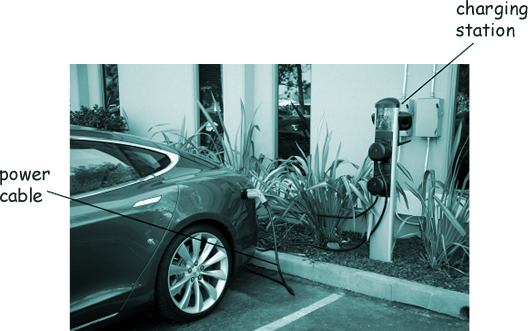GCSE Standard Questions: Electricity in the Home Q19. The photo shows an electric car being recharged.
(a) The charging station applies a direct potential difference across the battery of the car. What does 'direct' potential difference mean? The polarity of the supply does not change - one terminal is permanently positive in polarity with respect to the other one.
[1 mark] (b) The battery in the electric car can store 162 MJ of energy. The charging station has a power output of 7.2 kW. Calculate the time taken to fully recharge the battery from zero. 162 MJ = 162 x 106 J 7.2 kW = 7200 W power = energy/time P = E/t t = E/P t = 162 x 106/7200 t = 22500 s t = 375 minutes t = 6 hours 15 minutes [5 marks] (c) The potential difference applied across the battery from the charging station is 480 V. There is a current of 15 A in the circuit connecting the battery to the motor of the electric car. Calculate the resistance of the motor. V = IR R = V/I R = 480/15 R = 32 [4 marks] (d) Different charging systems use different electrical currents.
Tick the box that correctly compares the time taken to recharge a battery using charging system A with the time taken using charging system B.
[1 mark] (Total 11 marks) |
Follow me...
|






